How To Choose A Shaving Brush and The Right Type
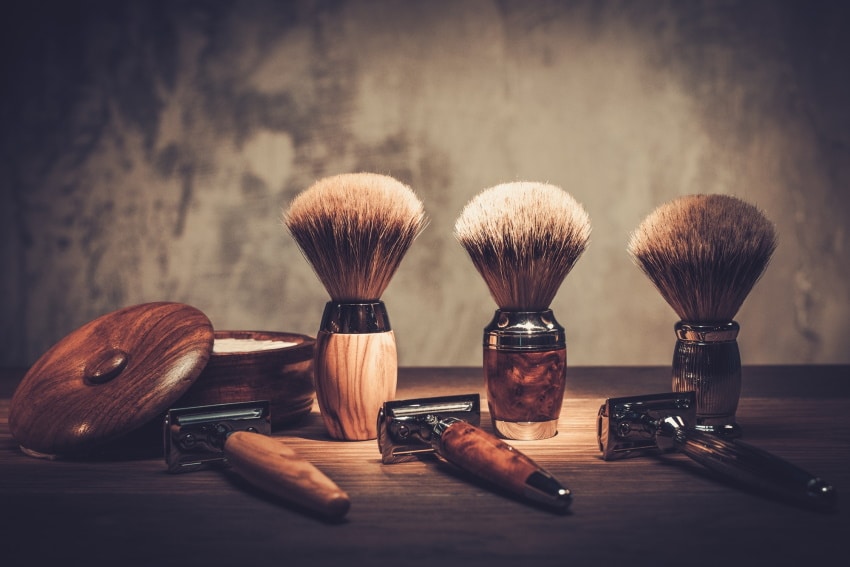
There is nothing more iconic in shaving than the shaving brush getting that rich lather ready. When you look at shaving in pop culture, you will always see the friendly barber building a lather in a shaving bowl, or the man in the bathroom taking time to build a thick lather for that traditionally close shave.
There is a level of removal from the common guy though. A great deal of know-how is seemingly locked behind this wall of secret knowledge. Luckily, guys like me are here to help out on that.
I’m here to break down and provide enough detail about how to choose a shaving brush, types, differences, what to look for, and how it can change your life –at least when it comes to shaving.
What Exactly is a Shaving Brush?
Shaving brushes (or Barber’s Brushes) are tools that have been used for a few centuries. The earliest predecessor of the modern shaving brush is largely thought to have originated in France in the 1700s. In a very basic description, a shaving brush is a tuft of thick and rich hair attached to a small handle that fits comfortably in a hand.
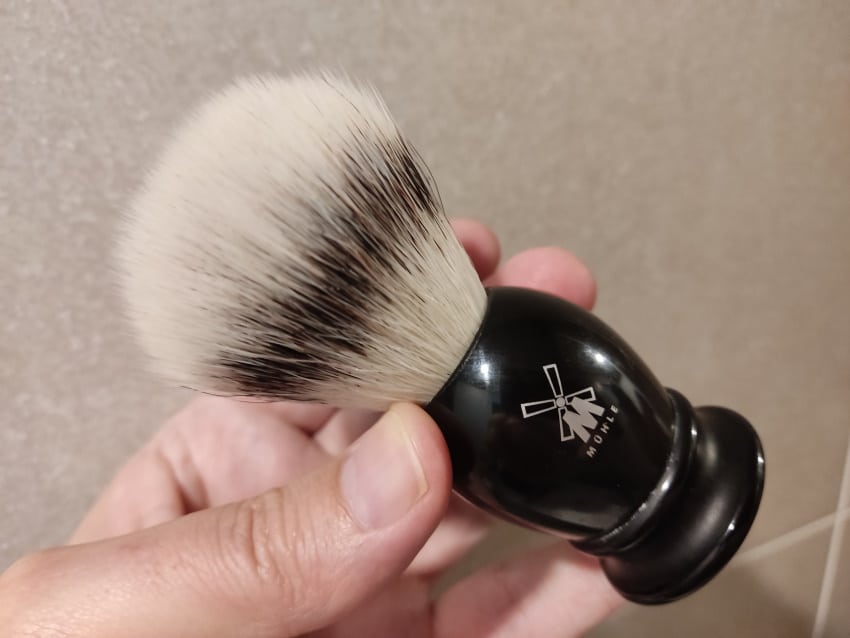
Traditionally, shaving brushes are made from badger hair, horse hair, and boar hair, but synthetic furs have been gaining favor recently. The trick for the fur is that it needs to be thick and absorbent fur to collect the shaving soap and water to gather and make the lather needed for shaving. Badger is typically considered the best for this use and is largely the most expensive.
Shaving Brushes are sometimes seen as a luxury item, and after a fashion, some of them can be. After all, there are some brushes you can find with gold, tortoise shell, or even porcelain handles. One can see how brushes could be used as a status symbol, but I would argue they are definitely more useful than that.
What Is The Purpose of a Shaving Brush and its Benefits?
One might ask why use a Shaving Brush when you could just use your hands to apply all you needed regarding shaving products. Why would you want to use a moderately expensive tool?
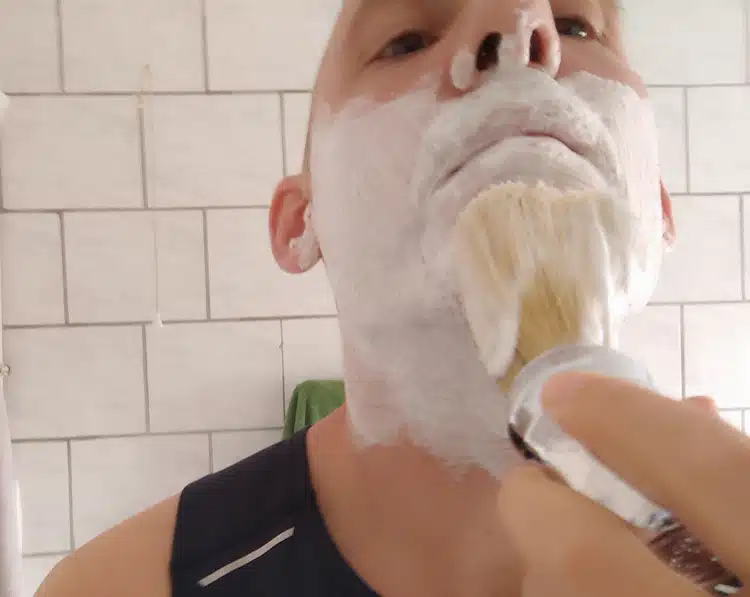
- Exfoliating: Shaving Brushes naturally exfoliate the skin while you are applying your shaving cream. The bristles work to help remove dead skin and really get all of the nooks and crannies of your whiskers. This can help with preventing blackheads, pimples, and ingrown hairs. This also helps to keep your razor from getting dulled as it scrapes away dead skin cells.
- Better Lather: The Brush is much better than your hands at getting a good lather going. If you are using the right soaps, you can get a better, thicker, more invigorating lather than anything you could possibly get out of the can. The process of lathering soap will also work to really mix the ingredients of your soap well as you build your lather.
- Prep Your Beard: When you use your hands to apply shaving cream, you have a tendency to force down all the whiskers on your face. This can make it rough to get a good and even shave with a pass of your razor, especially when you are shaving with the grain of your beard. The brush is going to stir up your whiskers and get them all standing on end and ready to be cut.
- Lubricant Lasts Longer: You are going to start saving money when using a shaving brush as a good shaving soap and creams will last much longer than the stuff in cans.
Types of Shaving Brushes and Differences
Shaving brushes can come in plenty of different and complex styles. While there are many variations in handle materials and shapes, the most important part is the type of bristles used. Each different kind of hair comes with pros and cons to its use. Some are also rare and, therefore, more expensive to buy.
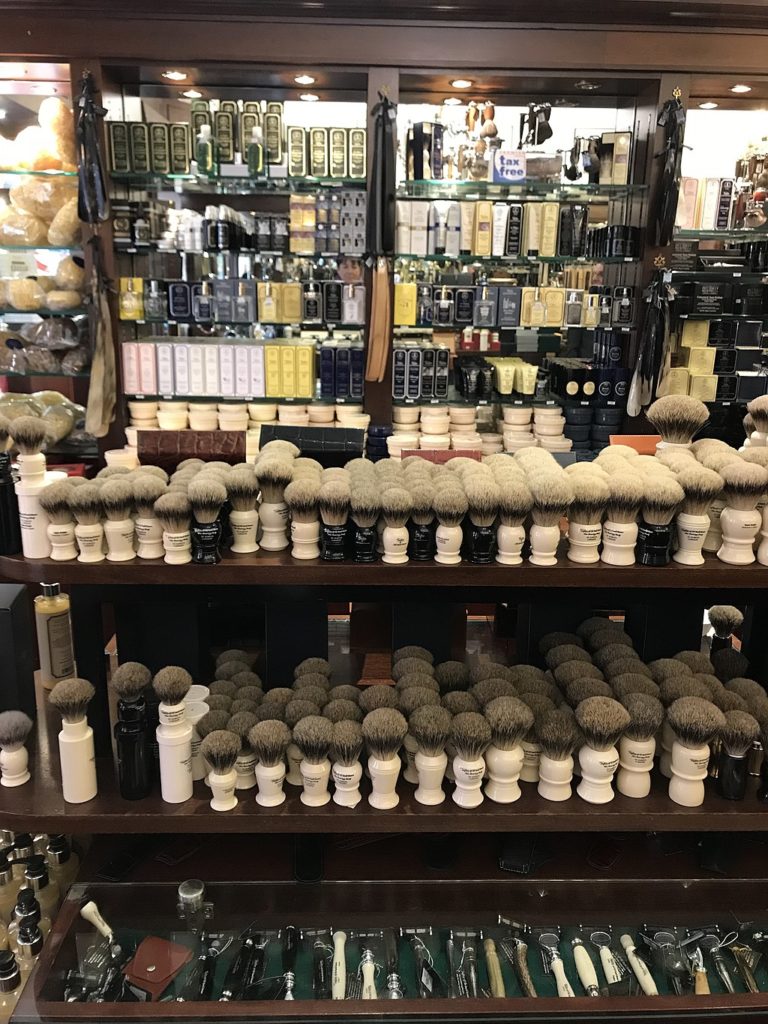
Types of Handles
Handles can be made of almost any solid material. Horn, Metal, Plastic, Wood, Porcelain, etc. There are a myriad of options available for use. Most modern brushes use plastic, wood, or metal. Metal handles are quite common, but can sometimes be very heavy. Plastics are lighter but often crack after extended use. Finally, wood handles are the most aesthetically pleasing (to myself, at least), but wood does not do its best when having extended contact with moisture.
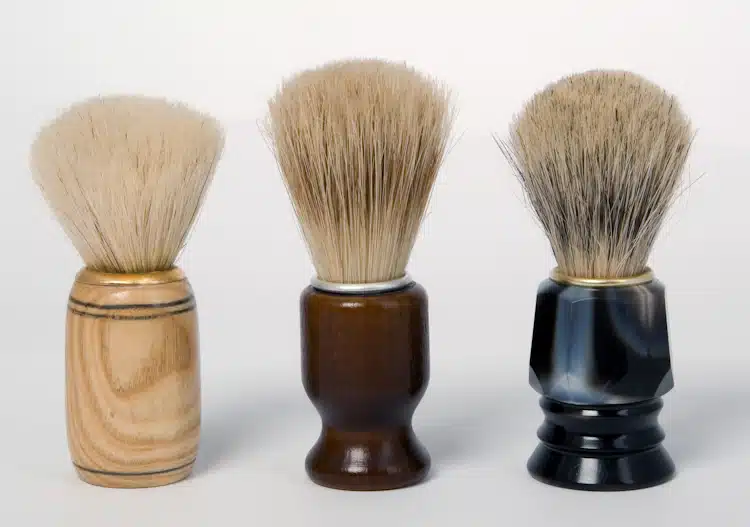
Types of Brush Hair
The Hair of the Brush is the business end, and can make all the difference in how well a brush works. More specifically, how well a brush can work for you.
Boar’s Hair
Boar Hair is a coarse hair coming from the coat of domesticated or trapped boars. The bristles are very rough at first, but can slowly be broken in with continued use. This type of brush is a good place to start if you are just getting into wet shaving with brushes. Boar hair is the most common natural hair on the market, so they are relatively inexpensive from the get go.
It works really well to get under the whiskers on your face, and get them standing up for the shave. The downside here is that Boar’s Hair Brushes shed their bristles really quickly because of the stiffness, so you’ll have to replace it sooner than the other brush types. It also does not hold as much water, so you will spend more time lathering and need to use more soap each time you shave.
Horse Hair
A step up from the Boar Hair brush, Horse Hair was the vogue option for a while before falling out of style. Now it is on its way back. It’s much softer than Boar’s hair, and needs a great deal less work to break in.
The trade off with horsehair is that it also doesn’t hold as much water as synthetic or badger hair. It also kind of has an odor issue. Horse Hair naturally smells kind of off, so you might need to shampoo it multiple times to get rid of the weird smell. The bristles also are a great deal more fragile than the Boar’s hair. So if you don’t take care of it, it will fall apart.
Synthetic Hair
Synthetic hair brushes are the new kid on the block, and offer a much less expensive alternative to the top of the line Badger hair brushes. Their quality can range between “no better than boar hair” or all the way to the top of the line super badger hair, and it is important when you are shopping for a synthetic hair brush to read user reviews yourself before you order from any brand.
The best part of the synthetic hair is it is vegan and very good for those who might have an allergy to animal hair. They are cruelty-free, without the trapping and abuse that can sometimes come with harvesting of boar and badger hair. Synthetic brushes can also last a great deal longer than Horse or Boar hair brushes, meaning your investment will often go longer.
Badger Hair
Badger hair is the cream of the crop, top of the line, the cadillac of brushes. It’s almost iconic in the shaving community as originally the word for a shaving brush in the classic french blaireau which actually translates to “badger.”
Badger hair brushes will last you a long time if you care for them, and are incredibly soft against your skin. They hold water and lather better than any other type of brush hair. They are, however, the most expensive of all the brushes. Even amongst badger hair brushes though, there is some variation.
Pure Badger Hair
Pure Badger is the most common type of badger hair brush on the market. This hair often comes from no specific part of the badger, mostly just gathered from other trimmings from other brushes. This is going to be your least expensive option if you want to jump in on the ground level with Badger hair.
Best Badger Hair
Best Badger comes from the belly hair of a badger, making it longer and more luxurious than Pure Badger hair. It will often hold water even better than Pure Badger and is even softer against your skin. It’s somewhat of a trade-off. Softer hair doesn’t exfoliate as well, but it will lather better. If you play tabletop games or RPGs, this is the point where you need to start thinking about min-maxing.
Super Badger Hair
Sometimes referred to as Fine Badger Hair or Fine Super Badger Hair, this type of hair comes from the back of the Badger. It is largely considered softer than even Best and Pure Badger, but it is much harder to find. Most often it’s added as filler to Silvertip Badger hair brushes because the differences between the two are very subtle. Super Badger Hair is often more fragile than the other Badger hairs though. If you want to keep using it, make sure to take good care of it.
Silvertip Badger Hair
The rarest and most expensive of brush types. Silvertip Badger hair comes from the badger’s neck. It is the thickest and softest of the hair available for shaving brushes. It will hold the most water and provide the best lather for your shave. It will also provide the softest hair for your face, while also getting deep into your beard and offering the best exfoliation for your face. This is the most expensive hair on the market, and is the most durable. As long as you take care of the brush, this type can last years.
The Controversy
It would be remiss of me not to discuss the issues of cruelty when it comes to shaving brushes. Badger and Boar hair brushes are harvested from trapped animals, often using methods that are excessively cruel to the animal. Badgers are not farm animals and often will struggle against being shorn. Who wouldn’t? Often they are hurt, and rather than be rehabilitated and released into the wild, the Badger is just killed.
While this might be economically good, it is in no way really ecologically sustainable. It is also ethically wrong from multiple standpoints.
The good news is that Synthetic Brushes have made some powerful strides in the last several years, and are almost indistinguishable from Badger hair at this point. I say almost because there is somewhat of a gulf when comparing the least expensive Synthetics to the most expensive Silvertip Badger hair is still very apparent, but that gulf is closing fast.
Edging over into personal opinion, right now until there is a more ethically viable method of farming badger hair, synthetics are the options I choose to use.
What to Look For in Shaving Brushes
When choosing the right shaving brush for your personal use, there are a few factors to look for.
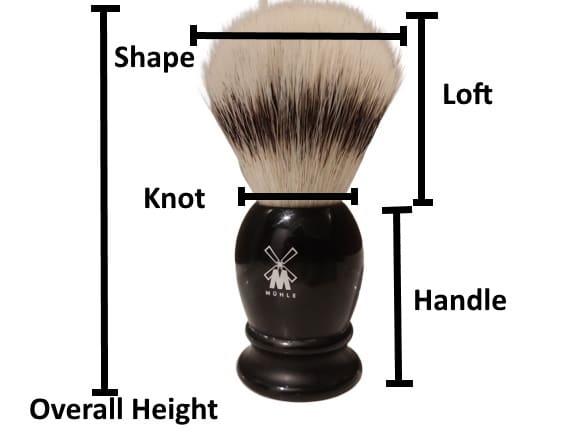
- Handle Feel: Make sure the material and shape fit your hand. You want to make sure it is comfortable and easy to use. Some heavy metal handles might just feel too heavy, or synthetic handles feel to light. You want the shape to fit you as well. If it fits your hand well, you are less likely to drop it and accidentally break your expensive new brush. For best feel and handle size, some experts say to measure from the palm of your hand up to the pad of your thumb. This can give you a good guide as to the size of handle that would be comfortable for you.
- Bristle Type: This is going to be the big one. You need to make a decision as to what kind of bristle type you want to use for your face. Most likely this would come down to your budget. Though there is nothing wrong with trying out a cheap boar hair brush if you are just getting into wet shaving. Don’t be afraid to upgrade though if you find that you like it.
- Water Retention: This is a big one that ties into the Bristle Type. The less able a brush is to retain water, the more time you are going to have to take lathering, and the more of your soap you are going to have to use. That’s also going to be an issue every time you need to build lather. If you do multiple pases with your razor, a brush that retains more water (therefore more lather) means you can keep applying what is there rather than create more. Synthetics and Horsehair tend to not retain water as well as Badger. Though, Synthetics are catching up on that last point.
- Size of the Knot: The knot of the brush is the hair itself, from the end of the handle to the tip of the bristles. This is typically measured in mm across the end of the brush. Some guys prefer smaller knots and some prefer larger knots. Think of your shaving brush like a paint brush really. The larger diameter means you are going to retain more water and lather, and cover a much larger area. However, the larger size means it will be a great deal harder to control where the lather is going, and you might end up with more of a mess than you intended. Smaller knot diameter means the brush will typically retain less lather, but you will be able to better control where everything goes. It will also be much quicker to clean.
- Loft of the Knot: The Loft of the knot is specifically the length of the brush, starting where the handle ends and going to the tip of the bristles. The higher the loft, the more flexible the brush is going to be. Flexible brushes will be able to more easily cover the contours of your face, jaw, and chin, but at the cost of being more “floppy” and splattering cream everywhere. A more flexible brush might also work better for lathering up with softer gels and creams, whereas something more stiff will work better with the triple milled shaving soaps. A higher Loft is also going to retain more water, so if you are looking at getting a Boar Hair brush and are worried about water retention, a higher loft can help to offset what the Boar hair doesn’t retain on its own. Speaking of stiffness…
- Backbone: The Backbone of your brush is the stiffness and density of the bristles. A brush with a good backbone is going to spring back and hold its shape. Dense brushes retain more water/lather, but are harder to get clean. A brush with a good backbone will exfoliate your skin better than something softer, but also feel scratchy and uncomfortable at first. This is also referred to as the “Scrub” of the brush as well. Literally talking about how well it scrubs your face.
- Shape of the Brush: Brushes come in 2 different shapes. Those shapes are a Fan or a Bulb. This is really going to come down to personal preference, and in all honesty, I find the differences pretty negligible. Bulb shapes typically offer more of a backbone to your shave, and fans are going to have somewhat more of a loft to them.
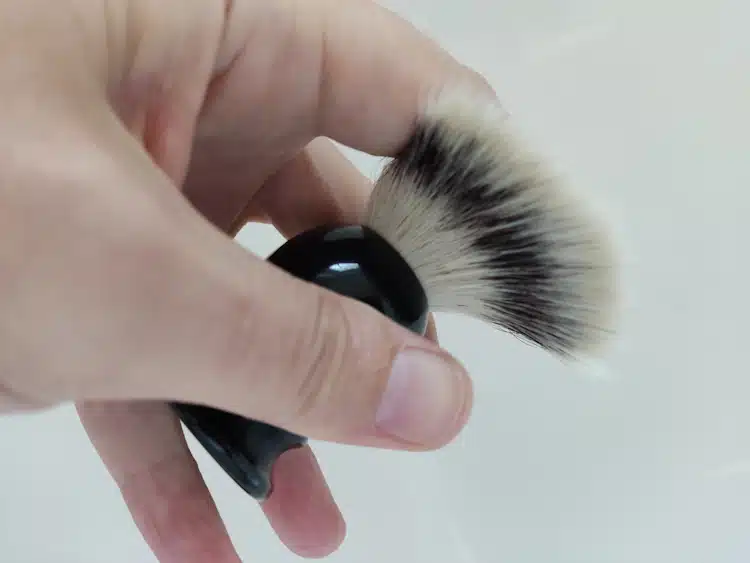
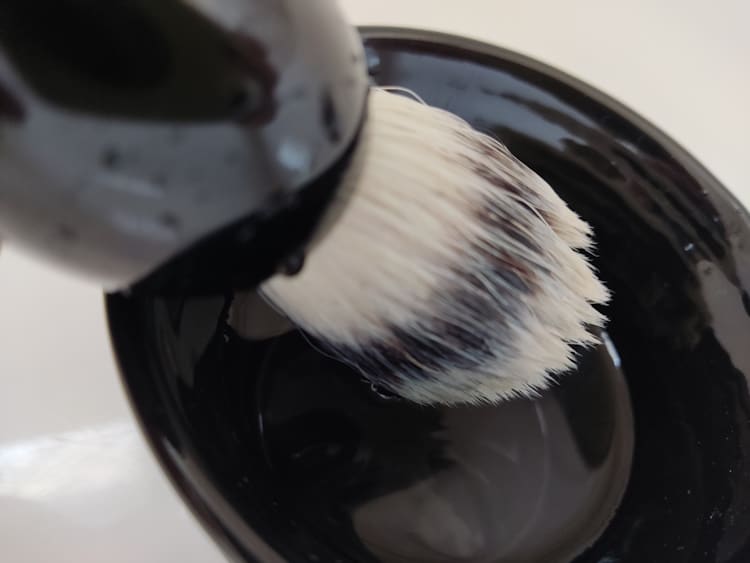
If you have the money though, I would highly suggest experimentation with different brushes and/or shaving brush brands. Find the best one that really works for you. Shaving is all about personal preference, even down to whether or not TO shave. Experiment, try new things, and go the extra mile to find what really works for you.
Once you have chosen a shaving brush, you might need a little advice about how to use it. Check out the how to use a shaving brush guide if needed.

